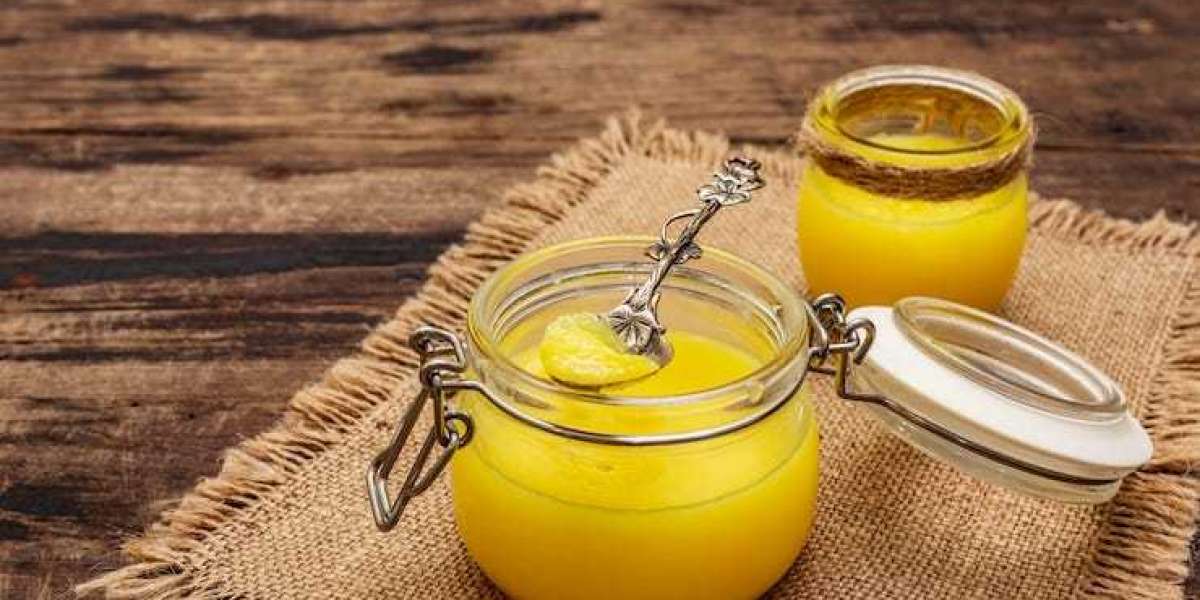Are you looking to elevate your culinary experience with a versatile ingredient that adds richness and depth to your dishes? Look no further than cultured ghee! In recent years, cultured ghee has gained popularity for its distinct flavor profile and numerous health benefits. Let's delve into the world of cultured ghee and explore its culinary wonders.
Introduction to Cultured Ghee
Cultured ghee, also known as "fermented ghee" or "desi ghee," is a traditional Indian clarified butter that undergoes a fermentation process before clarification. This process gives cultured ghee its unique tangy flavor and aroma, distinguishing it from regular ghee.
What is Cultured Ghee?
Cultured ghee is made by fermenting milk or cream before churning it into butter. The fermented butter is then heated to separate the milk solids from the golden liquid, resulting in clarified butter, or ghee. Unlike regular ghee, which is made directly from butter, cultured ghee undergoes fermentation, which enhances its flavor and nutritional profile.
Benefits of Cultured Ghee
Health Benefits
Cultured ghee is rich in essential fatty acids, vitamins, and antioxidants. It contains butyric acid, which is known for its anti-inflammatory and digestive properties. Consuming cultured ghee may promote gut health and support a healthy immune system.
Culinary Benefits
The fermentation process gives cultured ghee a unique flavor profile, with hints of tanginess and nuttiness. It has a higher smoke point than butter, making it ideal for high-heat cooking methods like sautéing and frying. Cultured ghee adds richness and depth to dishes, enhancing their flavor without overpowering other ingredients.
The Process of Making Cultured Ghee
The process of making cultured ghee involves two main steps: fermentation and clarification.
Fermentation
During fermentation, milk or cream is left to sour naturally, either through the addition of live cultures or by allowing it to ferment spontaneously. This process converts lactose into lactic acid, giving the ghee its characteristic tangy flavor.
Clarification
After fermentation, the soured milk or cream is churned into butter. The butter is then heated gently to separate the milk solids from the liquid fat. The resulting liquid is strained to remove any remaining solids, yielding pure cultured ghee.
Nutritional Profile of Cultured Ghee
Cultured ghee is rich in vitamins A, D, E, and K, as well as essential fatty acids like omega-3 and omega-6. It is also lactose and casein-free, making it suitable for individuals with dairy sensitivities. Compared to regular ghee, cultured ghee contains higher levels of probiotics due to the fermentation process.
Culinary Uses of Cultured Ghee
Cultured ghee is a versatile ingredient that can be used in various culinary applications.
Cooking
Use cultured ghee for sautéing vegetables, frying eggs, or searing meats. Its high smoke point makes it perfect for high-heat cooking methods.
Baking
In baking, substitute cultured ghee for butter or oil to add richness and flavor to baked goods like cookies, cakes, and pastries.
Bulletproof Coffee
Add a tablespoon of cultured ghee to your morning coffee for a creamy, frothy texture and an extra boost of energy.
Cultural Significance of Cultured Ghee
In Indian culture, ghee holds a sacred significance and is often used in religious ceremonies and rituals. Cultured ghee is valued not only for its flavor but also for its nourishing properties and association with purity and auspiciousness.
How to Choose Quality Cultured Ghee
When purchasing cultured ghee, look for organic, grass-fed options that are free from additives and preservatives. Opt for brands that use traditional methods of production and source their ingredients responsibly.
Storing and Shelf Life of Cultured Ghee
Cultured ghee has a long shelf life and does not require refrigeration. Store it in a cool, dark place away from direct sunlight. Ensure that the container is tightly sealed to prevent oxidation and contamination.
Common Myths and Misconceptions About Cultured Ghee
Despite its numerous health benefits, cultured ghee is sometimes misunderstood. Common myths and misconceptions include concerns about its high saturated fat content and its potential to raise cholesterol levels. However, research suggests that moderate consumption of ghee, especially cultured ghee, can be part of a balanced diet.
Potential Side Effects
While cultured ghee is generally well-tolerated, some individuals may experience digestive issues or allergic reactions, especially if they have lactose intolerance or dairy allergies. It's essential to consume ghee in moderation and consult with a healthcare professional if you have any concerns.
Recipes Using Cultured Ghee
- Golden Turmeric Rice: Cook basmati rice in cultured ghee with turmeric, cumin, and cloves for a fragrant and flavorful side dish.
- Ghee Roasted Vegetables: Toss mixed vegetables in melted cultured ghee and roast until golden brown and caramelized.
- Spiced Ghee Popcorn: Drizzle freshly popped popcorn with melted cultured ghee and sprinkle with your favorite spices for a delicious snack.
Environmental Impact
Opting for organic, grass-fed cultured ghee supports sustainable agriculture practices and reduces environmental impact. Look for products that are certified organic and ethically sourced to minimize your carbon footprint.
Where to Buy Cultured Ghee
Cultured ghee is available at health food stores, specialty grocery stores, and online retailers. Look for brands that prioritize quality and transparency in their sourcing and production processes.
Conclusion
Cultured ghee is a versatile and nutritious ingredient that adds depth and richness to a wide range of dishes. From its unique flavor profile to its numerous health benefits, including its potential use in Herbal products, cultured ghee has earned its place in kitchens around the world. Incorporate this culinary gem into your cooking repertoire and experience the wonders of cultured ghee for yourself.



